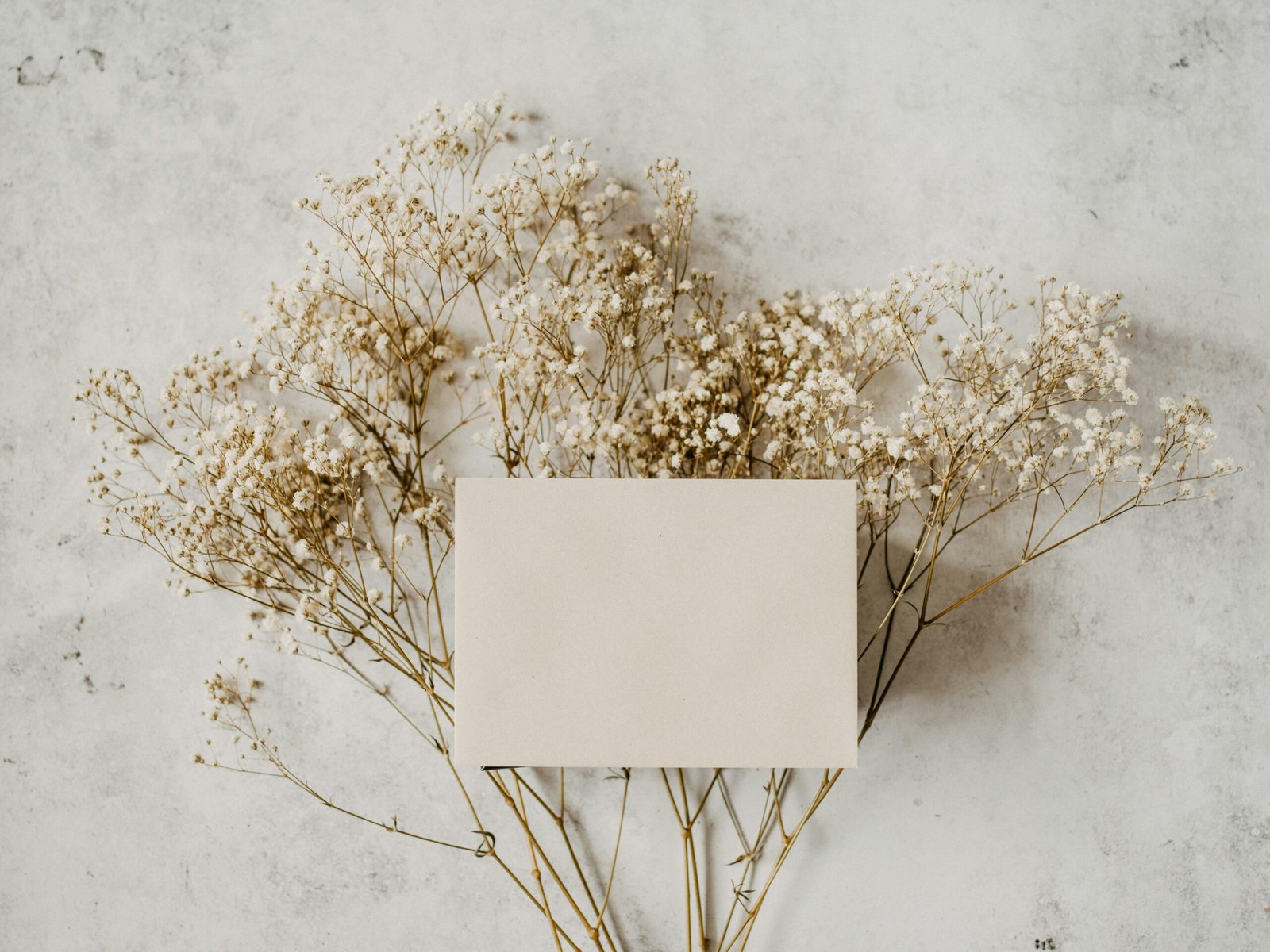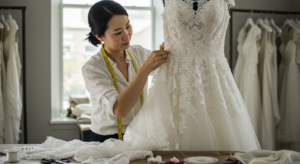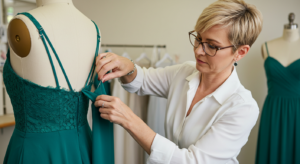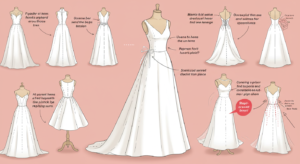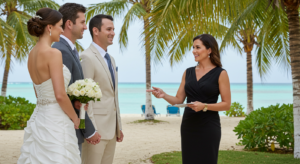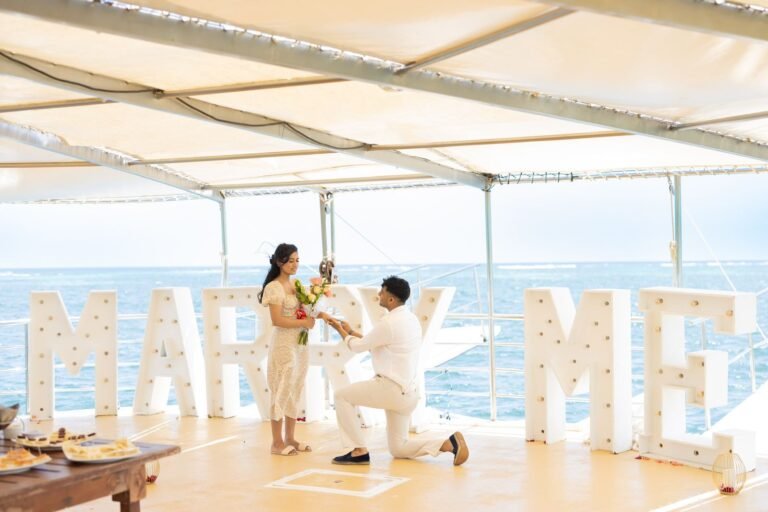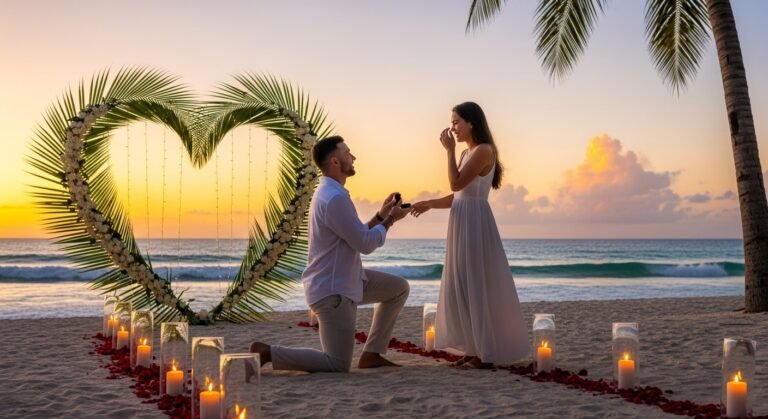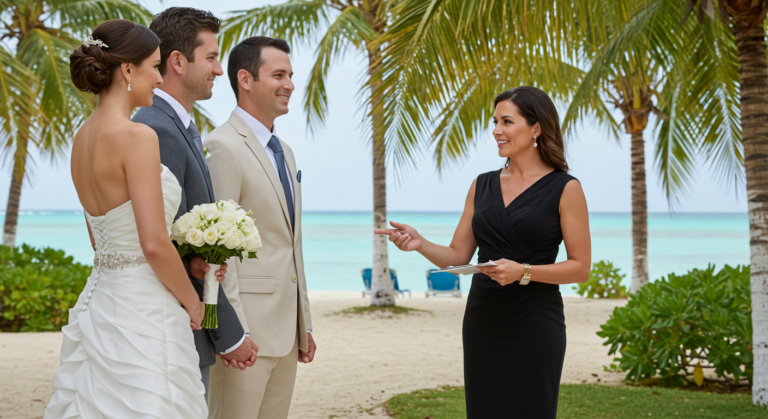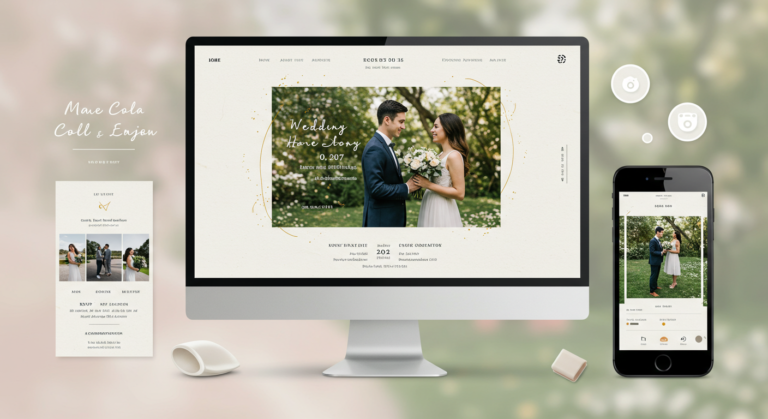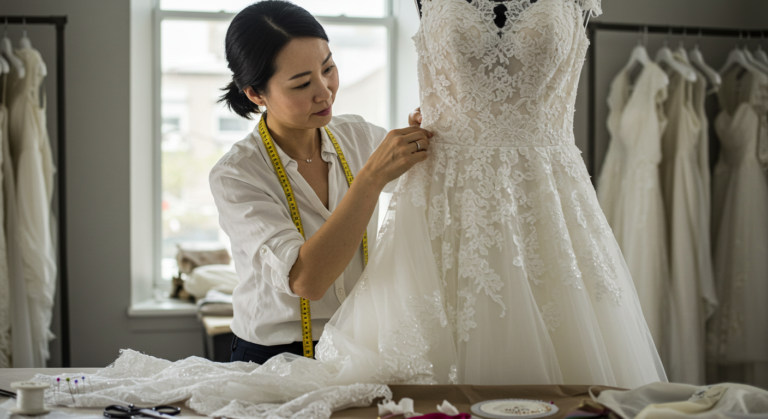Understanding Wedding Stationery Basics
Wedding stationery encompasses a variety of printed materials that play a crucial role in the wedding planning process. These components are not only functional but also serve to set the tone for the entire event. A thoughtfully designed wedding stationery suite reflects the couple’s style and informs guests about the important details surrounding the celebration. This suite generally includes several key elements such as save-the-dates, invitations, RSVP cards, and thank-you cards.
Save-the-dates are typically the first piece of stationery that couples send out to their guests, providing early notification of the wedding date and location. This allows attendees ample time to make arrangements to participate in the occasion. Invitations are the centerpiece of the wedding stationery suite and communicate essential information, including event date, time, address, and dress code. The design and wording of the invitation can significantly influence the guests’ perception of the wedding’s formality and theme.
Accompanying the invitation, RSVP cards are integral for gathering guests’ responses regarding their attendance. These cards often include a space for meal preferences or additional requests, allowing for smoother logistics in planning and catering. Finally, thank-you cards are a vital aspect of wedding etiquette, enabling couples to express their gratitude to guests for their support, gifts, and attendance.
These various components of wedding stationery work harmoniously to establish a cohesive theme, reflecting the couple’s personality while providing guests with clear information about the wedding. By carefully selecting the different pieces of the stationery suite, couples can enhance the overall experience for their guests and create lasting memories that align with their vision for the big day.
Choosing Your Wedding Style
Selecting a wedding style is a crucial step in the planning process, as it establishes the overall mood and theme of the celebration. Couples may gravitate towards various themes such as traditional, modern, rustic, or whimsical, each carrying its distinct aesthetics and characteristics. A traditional wedding often hinges on classic elements, favoring timeless color palettes such as ivory, gold, or pastel shades. In contrast, a modern wedding may embrace bolder colors, geometric patterns, and minimalist designs, showcasing a more contemporary and artistic approach.
Rustic weddings typically reflect a natural, earthy vibe and often include elements like burlap, wooden accents, and greenery. The color scheme for such a theme usually incorporates muted tones of brown, green, and soft pastels. On the other hand, whimsical weddings invite creativity and playfulness, often showcasing vibrant colors and imaginative designs that inspire unique and fun stationery options.
The wedding stationery suite should harmonize with the chosen theme, enabling couples to express their style effectively. The invitation set should reflect the colors and designs prominent in the wedding decor and attire. For instance, if the wedding has a rustic vibe, consider incorporating natural textures or floral patterns in the stationery that resonate with the centerpieces and table settings. Additionally, maintaining consistency can be achieved by using the same fonts and motifs across various materials, including save-the-dates, place cards, and thank-you notes.
When selecting a wedding style, it’s essential to curate a cohesive look that a bride and groom can extend through every detail of their big day. Every choice—from the stationery suite to flower arrangements—should echo the overarching theme, ensuring a visually appealing and harmonious celebration.
Selecting a Color Palette
Choosing the right color palette is a crucial step in designing your wedding stationery suite. The selected colors not only enhance the visual appeal of the stationery but also contribute to setting the overall mood and atmosphere of the wedding. Colors can evoke specific emotions, influence perceptions, and help convey the couple’s unique personality and preferences.
When determining a color palette, it is essential to consider the season and venue of the wedding, as these elements can greatly impact color selection. For instance, spring weddings often lean towards soft pastel hues like blush pink, mint green, or lavender, creating a fresh and romantic feel. In contrast, fall weddings may favor deeper tones such as burgundy, mustard yellow, or forest green, fostering a warm and cozy ambience.
Couples should also think about their personal preferences and the overall theme of the wedding when selecting colors. For example, a vintage-themed wedding might incorporate muted tones with some lace details, while a modern wedding could emphasize bold, vibrant colors and geometric patterns. Furthermore, integrating a metallic accent, such as gold or silver, can enhance the elegance of the stationery, reflecting the style of the couple.
A popular approach to creating a harmonious color palette is to choose one primary color and then select two to three complementary shades. This technique ensures balance and cohesion throughout the stationery suite. Classic combinations, like navy blue paired with soft peach or emerald green with gold accents, are often effective in conveying sophistication and timelessness.
Ultimately, the chosen color palette should resonate with the couple’s individuality while aligning with their vision for the special day. By thoughtfully selecting colors, couples can ensure their wedding stationery suite becomes a true reflection of their love story.
Finding the Right Paper and Quality
When selecting wedding stationery, one of the critical components to consider is the type of paper used. The right paper not only influences the overall aesthetic of your invitations but also plays a significant role in the tactile experience of your guests. Several materials are commonly utilized in the creation of wedding stationery, including cardstock, cotton, and recycled paper. Each offers distinct features that contribute to the overall appeal and impression of your wedding suite.
Cardstock, for instance, is widely favored for its durability and range of options in both texture and weight. It typically comes in various finishes, such as matte, glossy, or linen, which can dramatically impact the look and feel of the final product. A heavier cardstock often conveys a sense of elegance, making it a popular choice for formal weddings. In contrast, lighter paper stocks may be more budget-friendly but can still provide an attractive appearance when paired with elegant designs and typography.
Cotton paper is another noteworthy option, renowned for its luxurious texture and eco-friendly nature. This type of paper is crafted from cotton fibers, resulting in a softer feel and a more delicate appearance, which can enhance the tactile experience for recipients. Recycled paper offers an environmentally conscious alternative without sacrificing style, and it can come in various textures and colors, providing unique personalization opportunities.
As you weigh your options, it is essential to balance quality with your budget. Consider discussing your stationery needs with a professional printer or stationery designer who can guide you to selections that align with your vision and financial considerations. Ultimately, the right choice of paper can elevate your wedding stationery, creating a lasting impression that reflects your personal style and the significance of your special day.
Incorporating Personalization and Unique Elements
Personalization in wedding stationery is not merely a trend; it is a meaningful way for couples to express their unique love story and set the tone for their special day. Couples can explore various methods to infuse their stationery with personalized touches, ensuring that their invitations resonate with their individual styles and experiences.
One popular approach is the use of monograms, which can serve as a symbolic representation of the couple’s union. A custom monogram can combine the initials of both partners in an artistic layout, thus creating a distinctive emblem that can be utilized throughout the wedding suite—from invitations to thank-you cards, enhancing the overall cohesiveness of the stationery. Furthermore, a monogram can instill a personal touch that guests will recognize as uniquely theirs.
Another method to personalize wedding invitations is through custom illustrations that reflect significant milestones or shared interests. For instance, couples may choose to depict the venue of their ceremony, the city where they met, or even hobbies they enjoy together. These illustrations can serve as a visual narrative, offering guests a glimpse into the couple’s journey and making the invitations more engaging and memorable.
Additionally, the wording of the invitations plays a crucial role in personalization. Couples can opt for unique phrasing that captures their personalities, such as inside jokes or quotes that hold special meaning. This approach not only reflects their individual character but also adds an extra layer of authenticity to the invitations, ensuring they stand out among typical, formulaic wedding invitations.
By incorporating elements like monograms, custom illustrations, and personalized wording, couples can create a wedding stationery suite that is a true reflection of themselves. These unique features not only enhance the visual appeal of the invitations but also enrich the overall narrative of their wedding, crafting a memorable and personalized experience for their guests.
Budgeting for Wedding Stationery
Setting a realistic budget for your wedding stationery is a crucial step in the planning process. It allows you to allocate funds efficiently while ensuring that your wedding invitations and corresponding materials reflect your vision. Generally, couples should expect to spend between $400 and $800 on wedding stationery, which includes invitations, save-the-dates, RSVP cards, and thank-you notes. However, prices can vary significantly based on design complexity, materials used, and the printing method chosen.
When considering different stationery pieces, it is important to break down the costs. For instance, custom-designed invitations typically range from $2 to $10 per piece, depending on the vendor and design intricacies. Meanwhile, save-the-date cards can range from $1 to $5 each. Additionally, you must factor in the costs of printing, which can also vary. Digital printing is usually more cost-effective, while letterpress or foil-stamping adds more elegance but also increases prices.
To save money without compromising quality, consider DIY options. Crafting your own invitations or using printable templates can significantly reduce costs. Many couples opt for digital invitations as a modern approach, which bypasses traditional printing and postage expenses, thus saving money while still allowing for creative flexibility. Utilizing online platforms can also provide access to a variety of design options at lower prices. Additionally, remember to account for postage and any additional costs such as embellishments or mailing accessories.
Ultimately, a well-planned budget that includes all aspects of the wedding stationery will help ensure a stress-free experience, allowing you to make informed decisions without the fear of overspending. Prioritizing your spending and selecting options that still uphold your desired aesthetic will lead to an inviting and beautifully coordinated wedding suite.
Timing: When to Order and Send Invitations
Selecting the perfect wedding stationery suite involves careful consideration of timing, as this can significantly impact your wedding planning process. Generally, it is advisable to send out save-the-dates at least six to eight months prior to the wedding date, particularly if you are planning a destination wedding or if many of your guests will be traveling from afar. This early notification helps guests make travel arrangements and ensures they reserve the date in their calendars.
When it comes to wedding invitations, they should typically be sent out around eight to twelve weeks before your special day. This timeframe allows guests sufficient time to respond and make any necessary arrangements themselves. Factors influencing your timing include the wedding date, location, and nature of the guest list. If your wedding is during a peak season or involves many out-of-town guests, you may want to lean towards the longer end of the timeline for both save-the-dates and invitations to secure your guests’ attendance.
To guide couples in staying organized, here is a helpful timeline checklist:
- 6-8 Months Before: Send save-the-date cards.
- 3 Months Before: Finalize your guest list and choose your wedding stationery suite.
- 8-12 Weeks Before: Send out wedding invitations.
- 4-6 Weeks Before: Follow up on RSVPs and finalize seating arrangements.
By adhering to this timeline, couples can ensure their wedding stationery suite is ordered and dispatched in a timely manner, allowing for a smooth planning experience and an organized lead-up to their anticipated celebration. Ultimately, the key is to maintain open communication with your stationery provider to accommodate any specific needs or adjustments that may arise.
Choosing a Designer or Print Shop
When planning a wedding, selecting the perfect stationery suite is a pivotal element to ensure that the event’s theme and personality shine through. One of the most crucial decisions in this process is choosing the right designer or print shop. This choice can significantly influence the quality, aesthetics, and overall effectiveness of your wedding invitations and additional stationery items.
Firstly, style compatibility is essential. It is vital to identify a designer whose portfolio resonates with your vision. Analyze their past work to determine if their style aligns with your wedding theme, whether it be vintage, modern, rustic, or elegant. A designer that showcases versatility in designs can accommodate diverse tastes while still remaining true to their artistic voice. Ultimately, the goal is to find someone who can translate your ideas into a stunning visual representation.
Experience also plays a crucial role in vendor selection. A seasoned designer or print shop is familiar with the wedding industry and can navigate potential pitfalls that might arise during the design process. Their expertise can be invaluable for offering advice on the best practices for printing, material choices, and production timelines. Furthermore, reviewing customer testimonials can provide deeper insights into the reliability, professionalism, and quality of service that a vendor offers. Look for reviews on reputable websites or social media platforms to gauge previous clients’ satisfaction.
Effective communication is another critical component. When approaching a designer, it is essential to convey your ideas, preferences, and any must-have elements clearly. A well-prepared brief outlining your vision can streamline this process, ensuring that both you and the designer are on the same page from the outset. Active collaboration typically leads to more satisfactory outcomes, thus enhancing your overall wedding stationery experience.
Beyond Invitations: Managing Additional Stationery Needs
When planning a wedding, it is essential to recognize that invitations are just one component of a larger suite of stationery items that contribute to the overall experience of the event. While save-the-date cards and invitations set the tone for the wedding, additional stationery pieces, such as menus, place cards, programs, and signage, enhance the guest experience and maintain cohesiveness throughout the event.
Menus are an excellent way to inform guests about the culinary offerings of the day. These can be designed to complement the invitation suite through consistent color schemes, typography, and motifs. Place cards serve a similar purpose, guiding guests to their assigned seats while reinforcing the theme established by the invitations. Ensuring that these items align with the main invitation suite helps create a visually harmonious atmosphere, reinforcing the thoughtfulness that went into the planning process.
Wedding programs provide guests with crucial information about the ceremony, including the order of events, the names of the wedding party, and any special acknowledgments. Like other stationery pieces, they should reflect the chosen style of the invitations. Signage is another important aspect, as it directs guests throughout the venue. This can include welcome signs, directional signs, and signage for specific areas, such as the guest book or gift table, each tailored to the wedding’s aesthetic.
In addition to aligning with the primary invitation suite, budgeting for these additional stationery needs is vital. It is advisable to set aside a dedicated portion of your wedding budget specifically for stationery. By prioritizing this budget early in the planning process, couples can effectively allocate funds to create a cohesive and beautiful selection of stationery that will leave a lasting impression on their guests.
